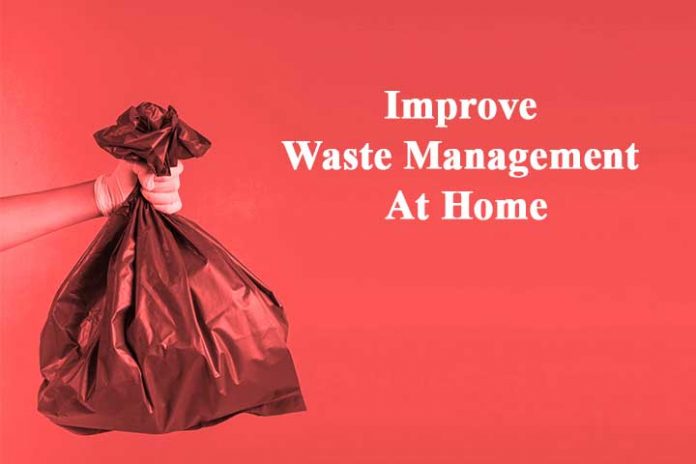Every year in every country, an average of 475 kg of urban solid waste is generated per person, which tends to rise if habits in homes are not changed. However, the acquisition of good practices in managing household waste is the first step to minimize the large amounts of waste generated, which will reduce our ecological footprint.
This article explains what separation at source is, selective collection into fractions, and how you can collaborate from home to achieve greater efficiency in waste management.
What is waste separation at the source?
It is the first classification of waste, which takes place in our homes and the first stage in the comprehensive waste management cycle. For this reason, we must know how to separate each of the fractions correctly. In this way, we collaborate so that the management process begins efficiently.
In the houses, the waste generated mainly is organic, light packaging, glass, paper, cardboard, and household waste remains. Let’s see what exactly is deposited in each of the separate collection containers:
Organic remains
They are bio-waste, that is, remains of plant or animal matter (food waste, plant waste or pruning). This organic fraction should not be mixed with other waste residues to be used for composting.
Light packaging
They are containers with a low weight/volume ratio containing food, hygiene or cleaning products. It is important not to generalize using the term “plastics” to refer to lightweight packaging. Only plastics that have been part of a container are included in this group. This group comprises plastic bottles and cans, tetra bricks, caps, bags, film, and aluminium foil.
Glass
We found glass residue in the bottles and jars that have contained food. We must correctly differentiate glass from crystal since they are not the same product and cannot be mixed in source separation because they cannot be recycled together. We must avoid throwing the caps of the glass containers in this container, and they must be removed and deposited in the light container.
Paper and paperboard
We can only include clean and dry paper, and cardboard scraps in this group, such as magazines, brochures, cardboard containing food … Napkins, dirty cardboard with food scraps or grease are not included because they cannot be recycled. They must always be folded to occupy less space and allow a greater deposit of this waste within the container.
Remains
We include in this fraction those residues that we obtain once we have separated the other fractions and obtain recoverable materials that are not included. They can be materials such as sanitary textiles, tableware scraps, cigarette butts, etc.
The collection of this waste is the responsibility of the local authorities, which install selective collection containers in the municipalities. Let’s see what it consists of.
Also Read: Stop Sweat And Bad Smells From Body
What is selective collection in fractions?
It consists of the installation of containers differentiated by colours, in which the previously classified waste will be deposited in the houses.
The different fractions that were separated in the homes will be deposited as follows:
Organic waste is deposited in the organic matter container (normally brown or orange), light packaging is deposited in the yellow container, glass in the green igloo-type container, paper and cardboard in the blue container. And the scrap fraction should be disposed of in the scrap container, which is usually grey or dark green. There are no differentiated containers for the organic fraction and the waste fraction in many municipalities, which are collected together. From the point of view of waste management, it is an undesirable practise because it prevents the organic fraction from being used for material recovery by transforming it into compost.
This ordinary selective collection is complemented in many municipalities with other specific bulky waste collections (such as furniture), batteries, textiles and cooking oils.
Now that we know how to carry out a correct separation at source and in which container to deposit them, it is time to acquire good habits in our homes that promote the reduction of waste and environmental pollution.
How to collaborate in the collection of waste from home?
First, we must review our habits to identify which actions are susceptible to improvement. Our trend must pursue the circular economy principle, that is, to prevent products from becoming waste after use by including them as raw material for the production of new products, whether of the same or a different nature. We propose the following measures to contribute to sustainable waste management:
- It separates correctly in origin. If you have questions, access our free specialized courses on waste management.
- Use cloth bags to shop and carry net bags with you to buy fruits and vegetables in bulk.
- Reuse glass jars to store food and replace plastic lunch boxes with these containers.
- Avoid using single-use utensils; replace them with others made with bamboo or sugar cane.
- Never throw used cooking oil down the drain. You must deposit it in the containers enabled for the collection of these products.
- Dispose of hazardous waste (batteries, electronic devices) in the clean point or authorized containers, never in the waste container.
- Change the plastic bottles for glass bottles or other materials such as aluminium or stainless steel. You can fill them as many times as you want with hot or cold liquids!
- Change the sending of correspondence to electronic format when possible, thereby helping to reduce the use of paper.
- Avoid food waste. To do this, buy perishable products wisely, or remember to freeze those you are not going to consume in the short term.
- Remember that organic waste should not be thrown in the mountains, on the beach or in parks. Although they are biodegradable, they visually pollute and encourage wildlife to change their eating habits.
Also Read: Everything You Need To Know About Sanitary Hygiene

